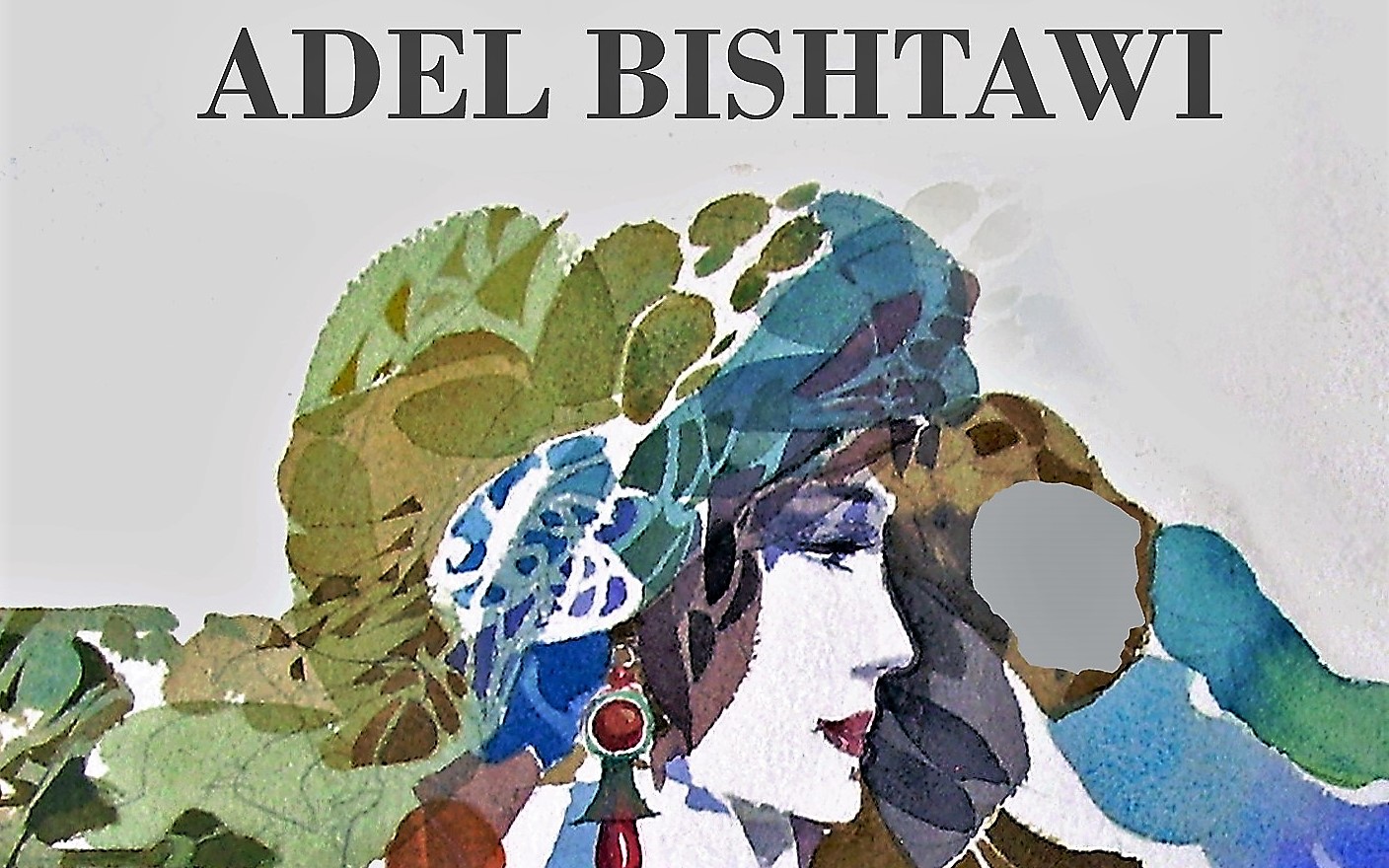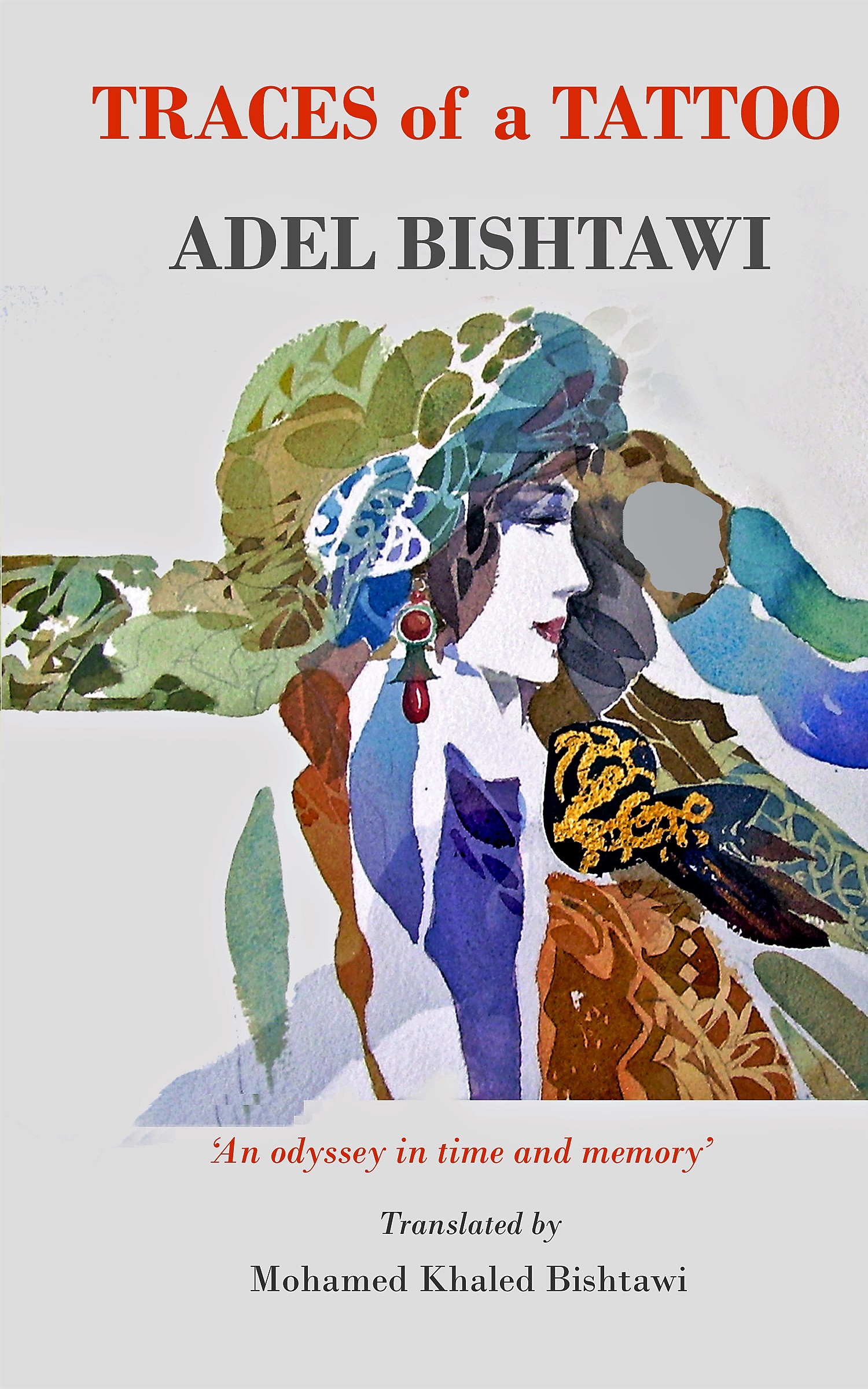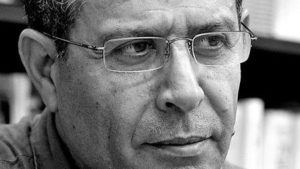

 Nouri Jarrah
Nouri Jarrah
𝗧𝗥𝗔𝗖𝗘𝗦 𝗢𝗙 𝗔 𝗧𝗔𝗧𝗧𝗢𝗢 𝗕𝗬 𝗔𝗗𝗘𝗟 𝗕𝗜𝗦𝗛𝗧𝗔𝗪𝗜
A review by the distinguished Syrian poet and writer Nouri Jarrah
Traces of a Tattoo seeks to convey several messages. Some relate to the woman and constitute a basic concern for the novel. The woman is, matter of fact, at the centre of the writer’s attention. To him, the woman is a reservoir of power and ability: she always finds her way in the end to express herself clearly, regardless of any attempt to rein her.
This view of the woman manifests itself in course of action and is reflected in the behaviour of the female characters as the writer puts them in diversified situations and circumstances requiring courageous initiatives the weak-hearted are not capable of taking. It is true that the writer does present to us instances of hesitation, but the reason for the apparent contradiction lies in two things: the craft of artistic tension and the craft of fictional seduction which introduces human cases as close as possible to what they are in reality, a reality which always carries a degree of contradiction. After all, is not the human being strong and weak at the same time, courageous and coward, noble and pauper?
At the risk of digressing, the woman and her status in society is the most important concern of Traces of a Tattoo. The diversified levels of narration employed in the writing of this novel make the feminine a reference point, a universal target and an ultimate goal of everything. They also turn the novel into a new ground where the woman is allowed a presence that is very much different from the one she is normally permitted to have in the Arabic novel. Here, she is, in some respect, a repressed woman who finds herself in a situation where she has no choice but to assert herself and, consequently, change.
In the following excerpt, we find some of what the writer has said through Alia in support of our observation,” ”I sometimes hear about the Third World’s problems and recall what happened to me and Aroub and I say to myself: You know, Aroub, the Third World’s largest debt is not owed to the World Bank, the International Monetary Fund, the Paris Club, the London Club, or all the banks of the world combined. The largest debt is owed to the woman in these unjust societies that increase their injustice by persecuting their women… When I hear about buses allocating only their back benches for women, when I see husbands dragging their wives out of taxis in the public street and beating them in front of everybody, I despair from the world and feel an urge to resist in any way.” The writer dedicated his novel to his heroine, Aroub, and, as he himself once observed, through her to the Arab Woman.
Of the other issues raised by “Traces of a Tattoo” some relate to scientific progress and the development of societal relationships. Also discussed is the development of human awareness through man’s relationship with the basic pillars of human existence such as life, death, happiness, misery, fate, and choice. In this context, the writer advances a point of view which sees man as the maker of his own destiny, or at least, not surrendering to it.
Conflict of the Novel
The conflict in the novel manifests itself in two opposing parties as represented by two sets of characters, the first being positive, the second, passive. The first set is composed of Aroub and Wissam while the second involves Alia and Hisham. The writer drew the distinctive features of the characters so as to illustrate his point of view regarding contradiction and conflict but without committing gender bias. He believes that, contrary to what some writers used to suggest, passivity is not intrinsically feminine but a feature common to both sexes and depends on human condition rather than being an intrinsic human flaw.
In some respect, “Traces of a Tattoo” intersects with other novels written by Arab writers in Arabic and English such as “A Bird from the East” by Tawfiq Al-Hakim, “The Season for Migration to the North” by Al-Taib Saleh, and “In the Eye of the Sun” by Ahdaf Sweif (in English). As such, the writer exposes his literary work to an aesthetical and intellectual challenge that is, unfortunately, the domain of literary critics not a non-professional reader like me.
Perhaps some of the Adel Bishtawi`s best personal experiences and, for that purpose, most productive in terms of igniting thoughts and drawing conclusions, have found their way to his novel. This should not mean that the writer is relying on his personal life. Rather, he is skilfully exploiting the knowledge he has accumulated through travelling and living in East and West. As the writer himself once pointed out, success and failure are not always important. What’s important, according to him, is that man must jump like a tiger and grab the chances that destiny puts his way.
But the writer appears, nonetheless, able to diversify his narrative techniques to suit the various stages of action while stressing their unique atmospheres and dressings which establish a hidden link between the characters’ thoughts, behaviour and motives and his own thoughts and motives. He presents a literary work which ignores a whole history of artistic pedantry so as to restore for the impressionistic novel which is endowed with a realistic fabric and, in some respect, aesthetic, romantic orientation, the ability to tackle contemporary concerns and immediate preoccupations.
Thus the novel encompasses individual concerns like love, travel, search, discovery, pain; technologies like the computer, the internet and the satellite dishes with their huge produce of the live and the abstract; national politics and international conflicts that govern the contemporary human existence. Consequently, the most important issue underscored by the novel is the literary concept, the literary form’s position within the literary theory as well as the capabilities of the literary form – be it the short story, the novel or the play – in establishing aesthetical values that are new but not strange to the Arab reader.
The literary form which Adel Bishtawi chose for his literary work is the products of, firstly, the idea of the novel itself and, secondly, the adventure of writing it. I admit to not having the ability to stop at certain junctions of the novel as is expected of a literary critic, but I would like to underline the docility of the style which the writer employs in depicting the behaviour of Arab characters while travelling to the West on an existential adventure that takes them deep into themselves and confronts them with big questions they had never faced before. It is as if the outside world (here, the West) is a mirror where the self is confronted with the image of the other.
It is also a test of the self and its affairs. What attracts the attention most is that, for the novel’s characters, the West does not constitute a complex but a potential challenge at its social, scientific, and moral levels, as well as a suitable stage for making comparisons based on personal aptitudes rather than ideological differences. But this should not mean that the writer is overlooking the past, complex relationship between the East and West. It is possible, however, that the writer would prefer to overlook the past as being an impediment to establishing human relationships, at the individual level, at least.
The novel’s new: a new spirit
What is new in Traces of a Tattoo is the old itself, albeit viewed in different, fictional perspectives. All in all, we have in front of us an artistic work that is alive, charged with a fast tempo and diversified levels of narration, while the transitions from narration to dialogue seem quite abrupt in certain instances but help avoid boredom in a work relatively massive in volume. The novel reveals the writer’s education and preferences and, alternatively, an Arabic oral legacy encouraging the use of poetry among the social groups of the middle class. Additionally, the writer amassed a wealth of artistic devices from the literary Arabic heritage such as thoughts, sayings, fictional characters and situations that help build a background for his novel’s characters and their civilization.
The basic theme of this novel is a love story renewing a failed one but empowered to overcome the first failure. As such, the theme serves a purpose that is very much similar to Shehrazade’s original pretext of telling tales to gain time and push away the hour of her execution. That is just what Mr. Bishtawi has done. Following in the footsteps of his grandmother, Shehrazade, he used a love story as a dramatic thread from which he spun a literary work encompassing a large number of levels of realities which enable his novel to tackle profound, intellectual, and issues of civilization to contribute towards a discussion of complex human problems.
One of the good virtues of “Traces of a Tattoo” is that it catches the new generation’s spirit and hidden pulses and introduces them in the form of conceptions and longing for a better future. Despite the severity of the current times and the profound doubts about its noble nature, the new generation is depicted as more positive than passive.
True to argument, the writer presents the civilizational and psychological differences existing between Aroub and Arlene as surmountable and do not prevent the two from meeting each other. They are, in some respect, differences of purely human condition. This view sums up some of the messages the writer wanted to convey by juxtaposing the two characters. The same mechanism of juxtaposing can be made a universal tool, as the writer himself told me when he said: “I put death vs. life, love vs. hate, the daughter vs. the mother, the son vs. the father, the East to the West, the dream vs. reality, and tried to answer the question as to who am I and who is the other, and what happens when we exchange seats.”
In conclusion, we may say that Traces of a Tattoo is a good introduction for diagnosing new relationships and a new awareness as represented in what distinguishes the behaviour of a new generation building its unique experience on the frustrated aspirations of its precursor. The writer depicts the new generation as more outgoing but not in everything, naturally, only in what its own experiences reveal. In more precise terms, the new generation is less burdened by the issues that lay heavy on the shoulders of the precursors. Or, at least, it has a different perspective, one that is somewhat comfortable. But the writer, nevertheless, does not seem ready to engage in preferential comparisons between times and generations.
Translated by Mohammad Khaled from the original text published by the Kuwaiti Newspaper Al Watan.